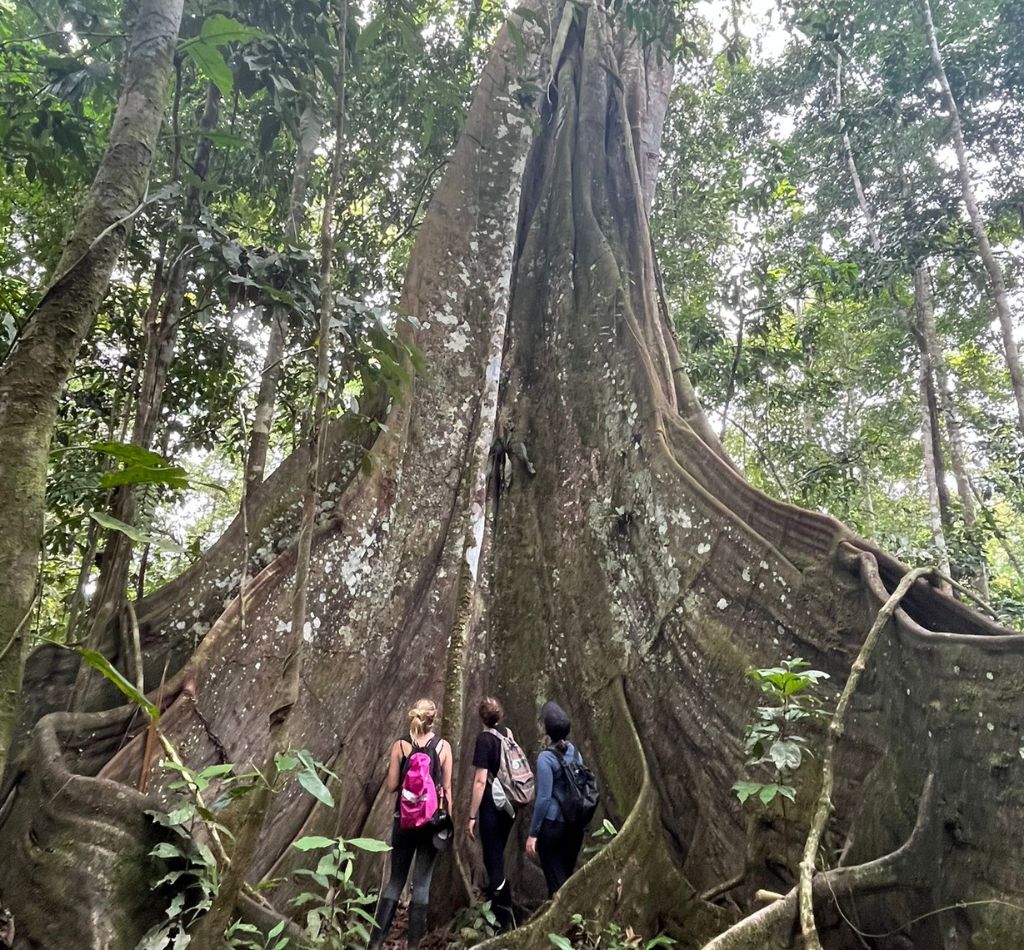
7-Day Amazon Rainforest Trip:
A Guide to the Best Experiences on Your First Three Days in the Jungle
Are you planning a trip to the Amazon Rainforest?
I’ve recently been in a beautiful off-the-grid ecolodge for a week. This guide will cover my first three days in the jungle with an itinerary full of the best experiences the Amazon offers. From exploring the diverse ecosystems and spotting unique wildlife to learning about the local indigenous communities‘ culture and way of life, you will not be disappointed.
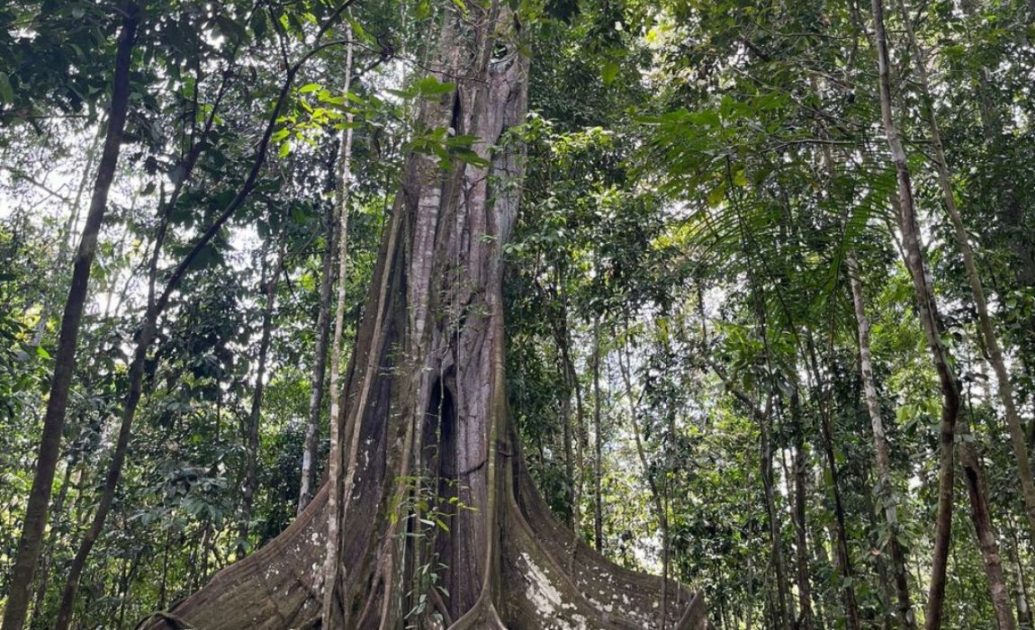
This Amazon Rainforest trip guide will take the guesswork out of your planning and help you make the most of your time in one of the most biodiverse places on earth. So pack your bags and get ready for an adventure of a lifetime!
If you’re considering a trip to the Amazon and looking for a truly unique adventure, Puerto Nariño should be at the top of your list. Check out this guide to 10 reasons why Puerto Nariño should be your next Amazon adventure for some inspiration on why this one-of-a-kind destination is worth a visit.
Exploring the Amazon Rainforest: Essential Questions to Consider Before Your Trip
Why should you visit the Amazon?
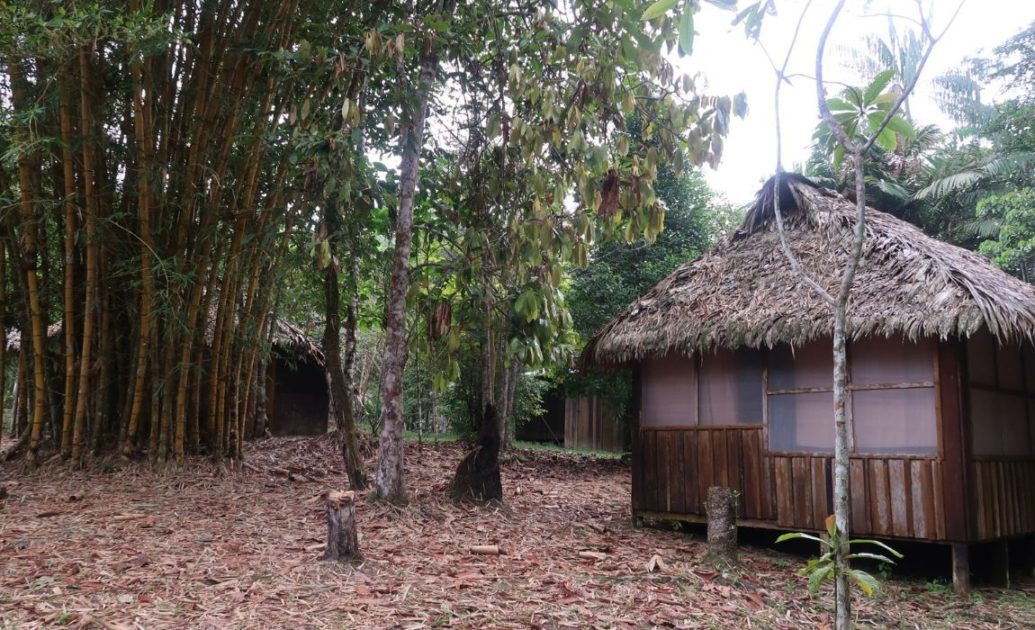
The Amazon rainforest is a biodiversity hotspot, home to an estimated 400 billion individual trees belonging to 16,000 species and countless other species of plants, animals, and insects.
Additionally, the Amazon rainforest plays a critical role in regulating the earth’s climate and weather patterns. Visiting the Amazon can be a unique and unforgettable experience, and it also helps to support the local communities and economies that depend on tourism.
However, it is essential to visit responsibly and to be aware of the environmental impact of tourism in the region.
What can you explore in the Amazon?
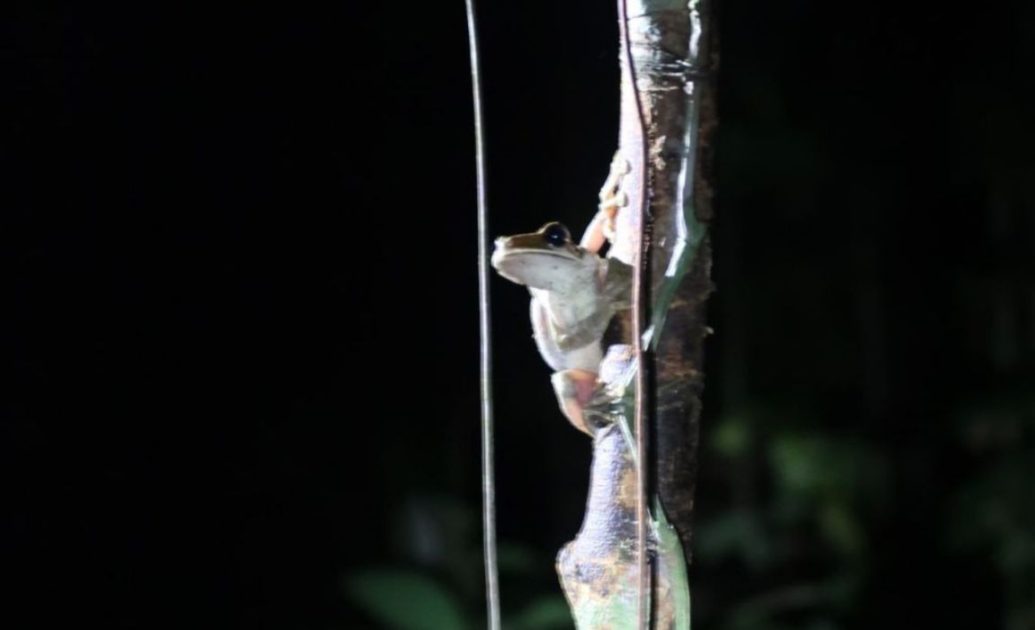
The Amazon rainforest offers a wide range of activities and experiences for visitors to explore. Some popular options include:
Jungle trekking:
Hiking through the rainforest can give you a chance to see a variety of plants and animals, including monkeys, parrots, and insects.
River cruises:
Many tour operators offer boat trips along the Amazon River, which can be a great way to see the rainforest from a different perspective and spot wildlife like pink dolphins and crocodiles.
Indigenous culture:
The Amazon is home to a number of indigenous communities, and many tour operators offer the opportunity to visit these communities and learn about their way of life.
Ecotourism:
Many ecotourism projects in the Amazon focus on conservation and sustainable development. These can be a great way to learn about the challenges facing the rainforest and to support local communities.
Fishing and healing rituals:
Some communities in the Amazon offer traditional healing rituals and ceremonies, such as Ayahuasca, San Pedro, and Rapé.
It is important to note that some activities may not be sustainable, ethical, or respectful to the local communities and the environment, so it’s important to research and choose tour operators that are committed to responsible and sustainable tourism.
What are the best sustainable tour operators in the Amazonas?
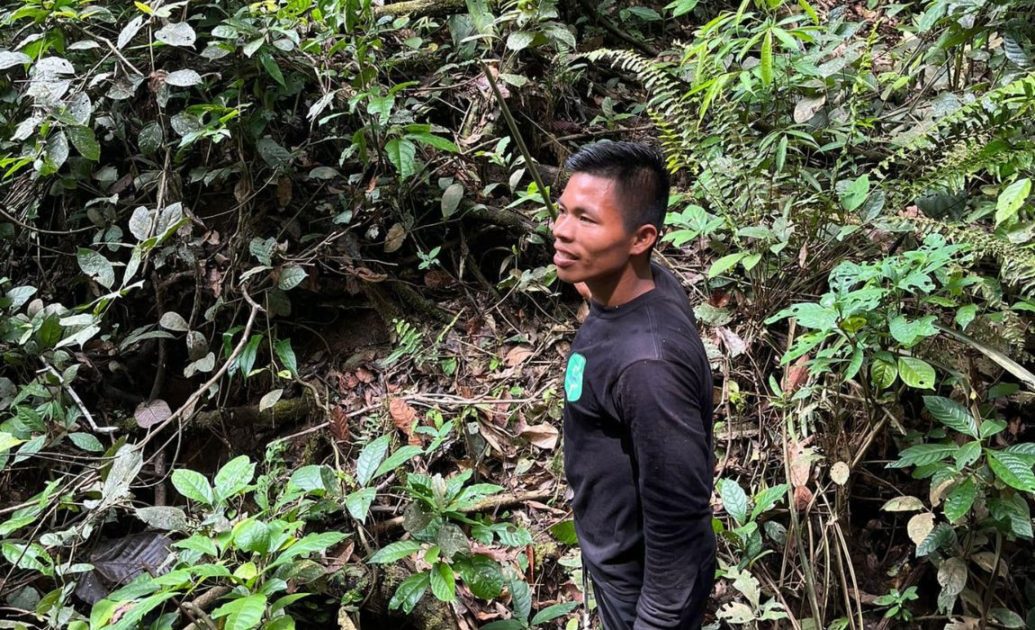
Several tour operators are committed to responsible and sustainable tourism in the Amazon. Some examples include:
G Adventures:
This tour operator offers a variety of sustainable travel options in the Amazon, including small group tours and community-based homestays. They also work with local organizations to support conservation and community development projects.
Rainforest Expeditions:
This company operates several ecolodges in the Peruvian Amazon and is committed to sustainable tourism practices, including conservation and community development initiatives.
Amazonas Sustainable Foundation:
This non-profit organization works with local communities to promote sustainable tourism in the Brazilian Amazon. They offer various responsible travel options, including cultural and nature-based activities, and support conservation and community development projects.
Amazon Adventure:
This tour operator focuses on sustainable and responsible tourism in the Amazon rainforest, working with local communities and organizations to promote conservation and sustainable development.
Amazon Ecotours:
This tour operator offers small-group sustainable ecotourism trips in the Amazon rainforest, such as wildlife and birding tours, and supports conservation efforts and local communities.
It’s worth noting that responsible tourism is a complex topic, and what is considered responsible and sustainable can vary depending on the context. It’s always a good idea to research a tour operator’s specific practices and policies before booking a trip and to ask questions about their sustainability efforts.
When is the best time to visit the amazon rainforest?
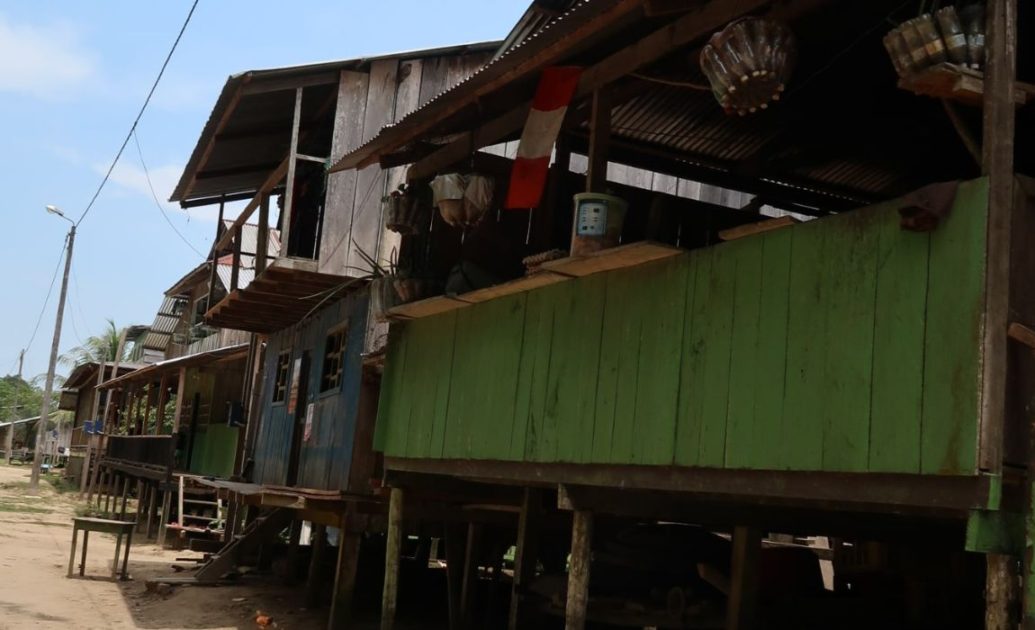
The best time to visit the Amazon rainforest depends on what you want to see and do during your trip. Generally, the dry season (June to September) is considered the best time to visit, as the water level of the rivers and tributaries is low, making it easier to navigate and spot wildlife. Additionally, the vegetation is less dense during the dry season, making it easier to explore on foot and by boat.
However, the wet season (December to May) also has advantages. During this time, the rainforest is lush and green, and it is also the time when many animals are reproducing, which can make for excellent wildlife viewing. Additionally, during the wet season, many of the rivers and tributaries that are not navigable during the dry season become accessible by boat.
Ultimately, the best time to visit the Amazon depends on your own preferences and interests. It’s also important to note that weather patterns are changing due to global warming, so it’s essential to check the climate forecast and the conditions before planning your trip.
What are some scams locals try on tourists in the Amazonas?
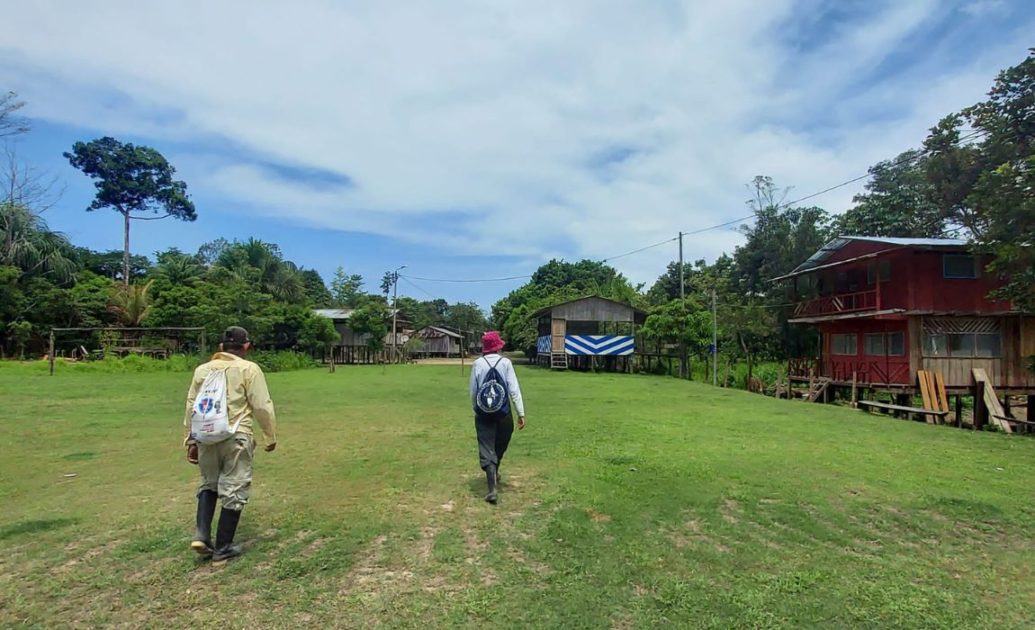
Tourists visiting the Amazon region of Colombia may encounter a variety of scams, some of which may include:
Overcharging for tours or services:
Some tour operators or local vendors may charge tourists inflated prices for tours or goods. It’s a good idea to research prices in advance and negotiate a fair price.
Fake guides:
Some individuals may pose as official guides and offer tours but may not be qualified or licensed. Be sure to check the credentials of any guide you plan to use.
Unauthorized tours:
Some tour operators may take tourists to restricted or protected areas without proper authorization, which can cause harm to the environment and local communities.
“Free” gifts:
Some locals may offer tourists free gifts, such as bracelets or trinkets, but then demand payment once the gift has been accepted.
Unsafe or unsanitary accommodation:
Some lodgings in the Amazon may not meet safety or sanitary standards. Research your accommodation options before you travel.
It’s important to be aware of these potential scams and cautious when interacting with locals. It’s also recommended to book your tours through reputable tour operators and be aware of your visit’s environmental and cultural impact.
Experience the Beauty and Wonder of the Amazon Rainforest: The first three days of my experience in the jungle
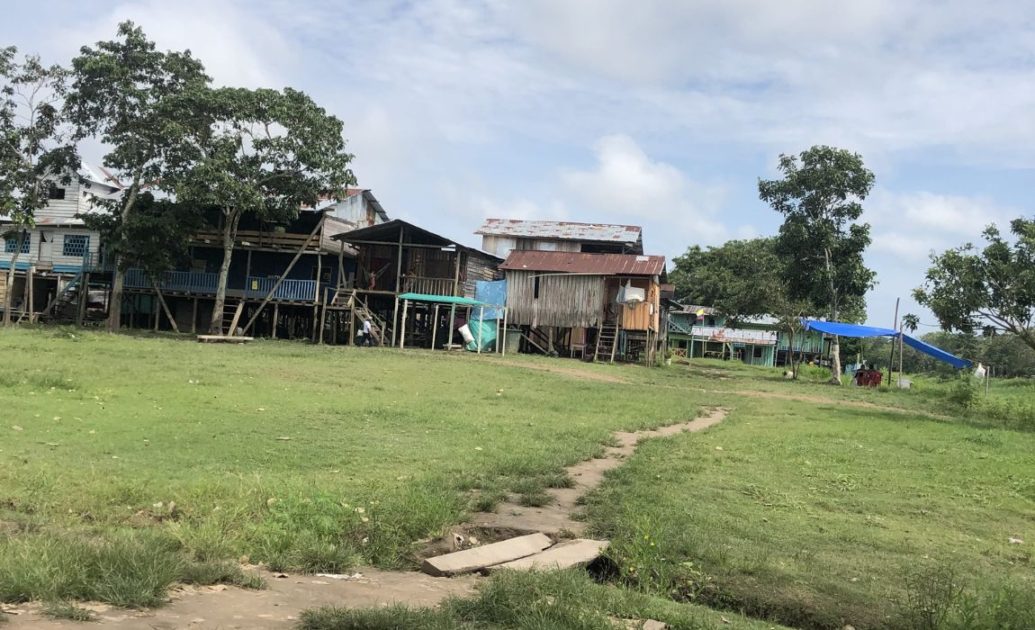
Day 1: Exploring the Amazon Rainforest – A Journey Through Leticia, the Amazon River, and Beyond
The flight to Leticia
The first day of my trip to the Amazon began before the sun had even risen. I woke up at 3:45 am, ready for an early start. After a flight from Bucaramanga to Bogota, followed by a layover, we boarded another flight headed for Leticia.
Once we arrived at the destination, we were immediately greeted with a cash payment of 35,000 COP. It’s an Eco-tax needed to pay for the protection of the rainforest. There is no option to pay with a card and no ATM, so make sure you have enough cash. It’s unclear how much of the tax payment actually goes toward protecting the rainforest.
Taking a boat on the Amazon river
We were then picked up by our guide and driven to the bustling market square of Leticia. The waiting time at the market square was longer than expected as the boat that would take us down the Amazon River only operates a couple of times a day. Around 1 o’clock, we walked through the marsh down to the boat dock. A lot of men offered to carry our luggage for a tip, but we just dragged them behind us.
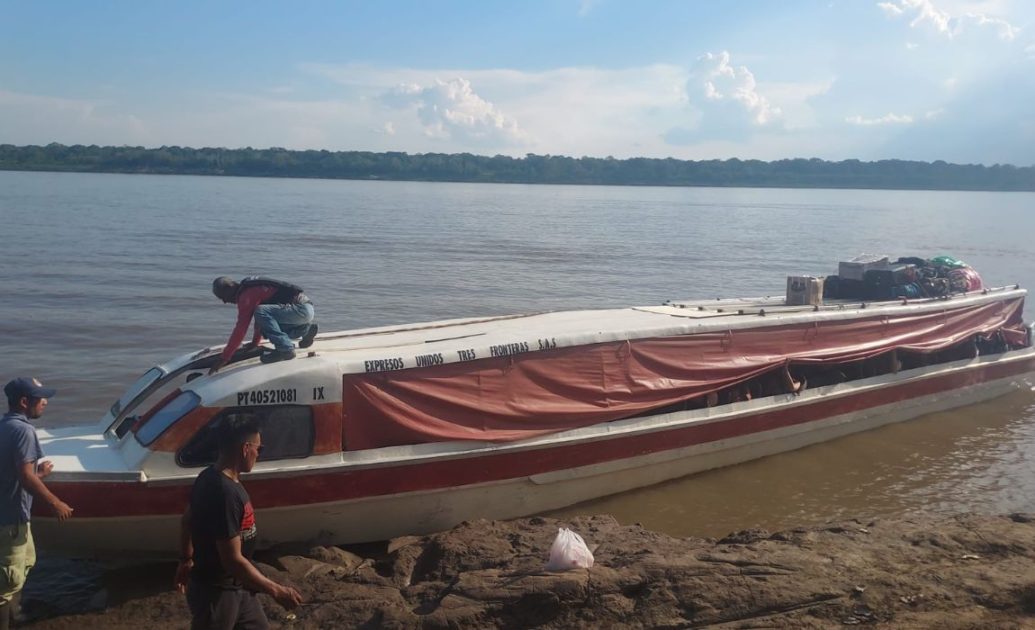
Finally, our boat arrived at 1:30 pm, and we were required to wear life vests throughout the entire 2-hour ride upstream. After what felt like an eternity, we were dropped off by a big tree in the middle of nowhere. After a 10-minute wait and being eaten alive by mosquitoes, we were picked up by a smaller boat with our native guide, Rico.
The journey down the Amazon River was not without its challenges. Our boat was smaller than expected, and the stream we traveled on was narrow and littered with dead brush and trees. There were several moments when I thought the boat would flip over, and we were later told that this had happened before with other tourists’ luggage. We were fortunate to make it to our accommodation safely and dry.
Finally made it to our Ecolodge in the Amazon
We were the only guests staying at the remote accommodation run by local people who welcomed us warmly.
And before you ask, what is the name of this Ecolodge in the middle of nowhere? It’s the Yoi Ecolodge.
By that time, it was around 5 or 6 pm, and we thought that would be it for the day since we’d been up since 3:45. Well, we were wrong. Despite the early start and the long journey, we were not done for the day.
Before we could even have dinner, we went for a nocturnal walk to spot all kinds of animals. And, of course, what did we see first? A giant tarantula! I have a giant fear of spiders. We also saw some other spiders, frogs, bugs, and different insects. Then we finally had dinner and went straight to bed.
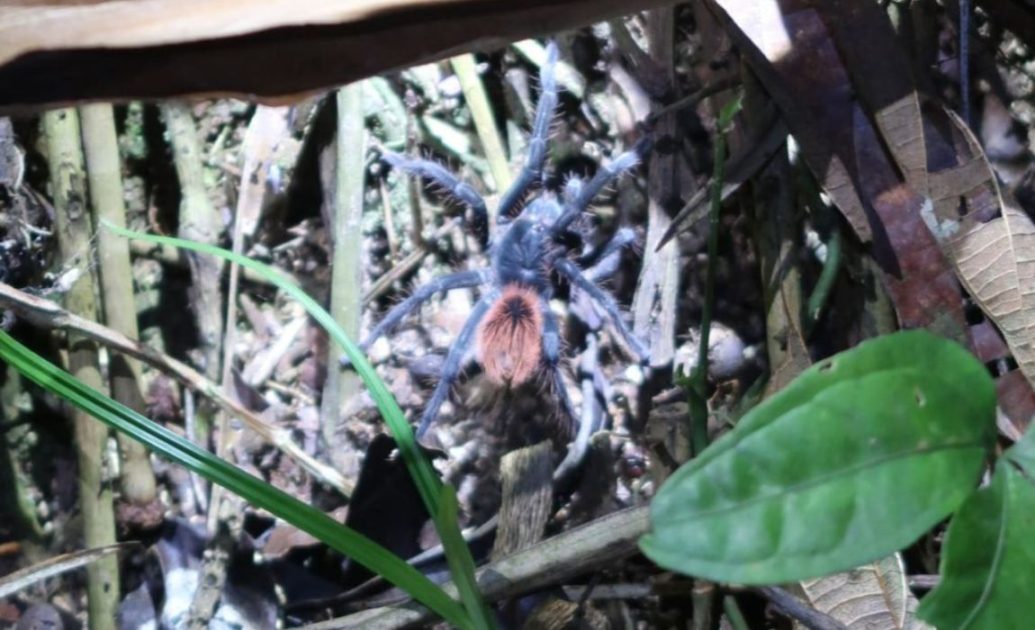
Oh, and if you thought you would have light and electricity whenever you needed it, you’re wrong. The generator was only turned on for two hours in the evening, from 6 pm to 8 pm, and that was only if there was enough gasoline. This was the case for only 2 out of our 6 nights in the Amazon.
Day 2: Exploring the Amazon Rainforest – Crossing the Border to Peru, discovering the Ojo and finding Sloths
Another boatride on the Amazon
On the second day of our trip to the Amazon, we set out to explore a new country. After a leisurely breakfast at 7 am, we boarded our small boat once again and set off toward Peru. Wait, Peru? Although it may seem unexpected, Peru is just on the other side of the Amazon River.
However, our journey required us to navigate back up the small stream we had traveled down the day before and then make our way to the mainstream of the Amazon, which took us about 1 and a half hours overall.
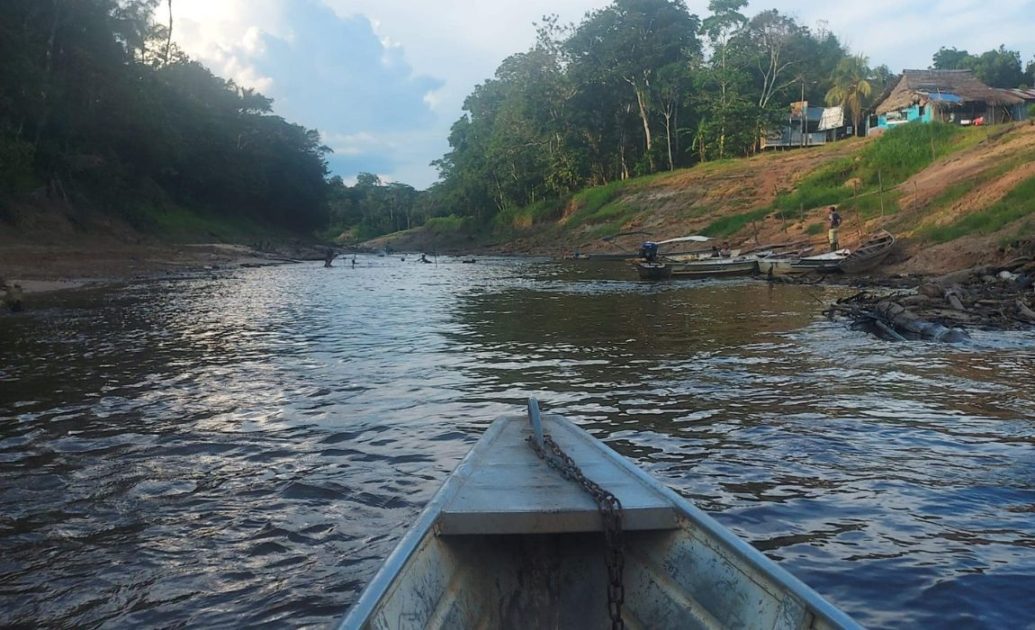
Finding “El Ojo”
During the crossing of the Amazon, we were caught in the wind and got drenched, and it was as if we were on the open ocean rather than a river. Once we arrived in Peru, we walked to a small community called San Antonio de Cacao. This village is unique as all the houses are built on stilts to accommodate the regular flooding caused by the rainy season.
Our 1 1/2 hour hike through the jungle was filled with uncertainty as our guide only spoke of a giant tree referred to as “El Ojo.” When we finally reached the tree, we were awestruck by its sheer size. As we sat in amazement, the mosquitoes started to swarm, cutting our appreciation short.
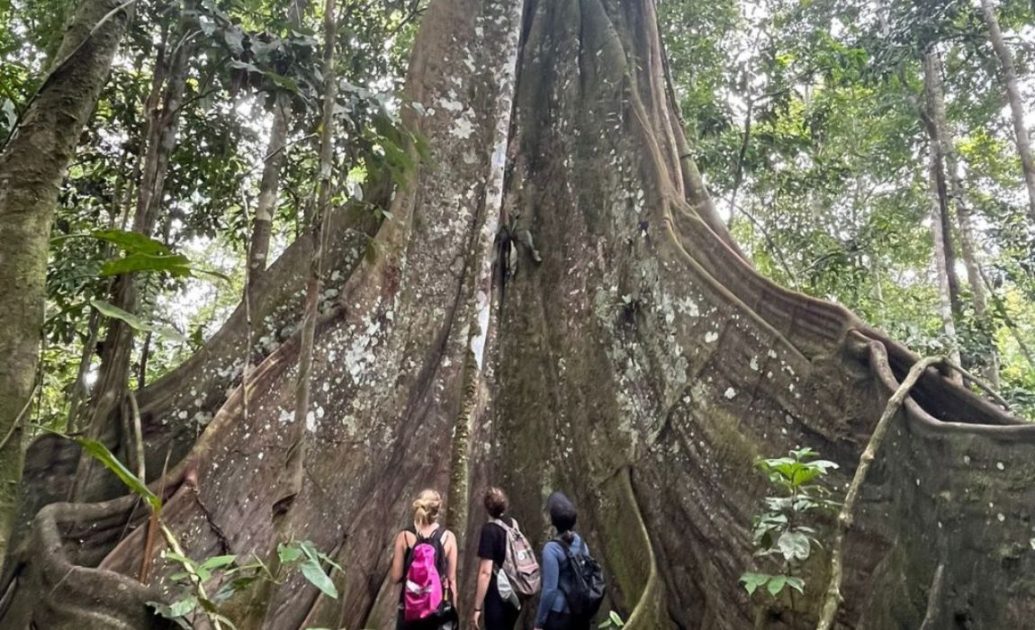
Super cute sloths
After taking a quick swing on a liana, we headed back to San Antonio de Cacao for a delicious lunch. Instead of taking a much-needed nap, we set out on a sloth-spotting excursion during the hottest part of the day. A search to find and marvel at these elusive creatures hidden high up in the trees. Sloths are incredibly difficult to spot as they blend in seamlessly with their surroundings, remaining perfectly still when sensing danger.
During the excursion, we were fortunate enough to spot three sloths. They were adorable but also high up in the trees. After a long and tiring day, we returned to our accommodation to rest and prepare for the next day’s adventure.
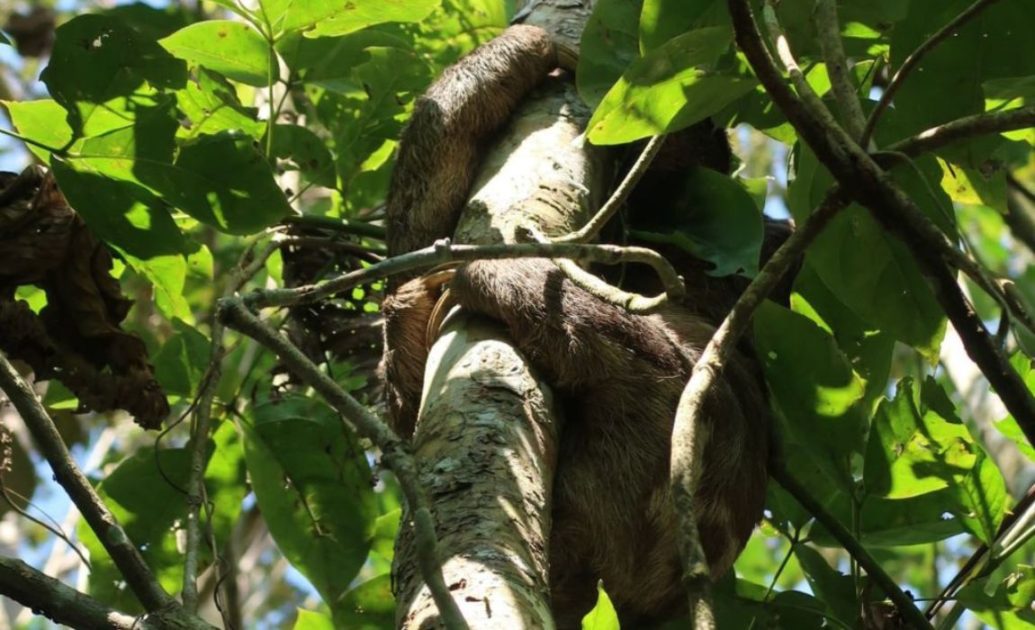
Day 3: Exploring the Amazon Rainforest – Visiting a Monkey Sanctuary
On the third day of our trip to the Amazon, we visited Caserio Mocagua, a small village located on the Colombian side of the river. Our main destination for the day was the Maikuchiga animal sanctuary and rehabilitation center, which was founded by Sara Bennett. The sanctuary’s primary focus is the rescue and rehabilitation of monkeys.
One of the standout features of the sanctuary is that there are no cages or other enclosures, and visitors are not allowed to take any pictures. The emphasis is on the monkeys’ well-being rather than making it a tourist attraction where visitors can hold or pet the monkeys. It’s important to remember that these are wild animals and that it’s best to simply watch them and let them be.
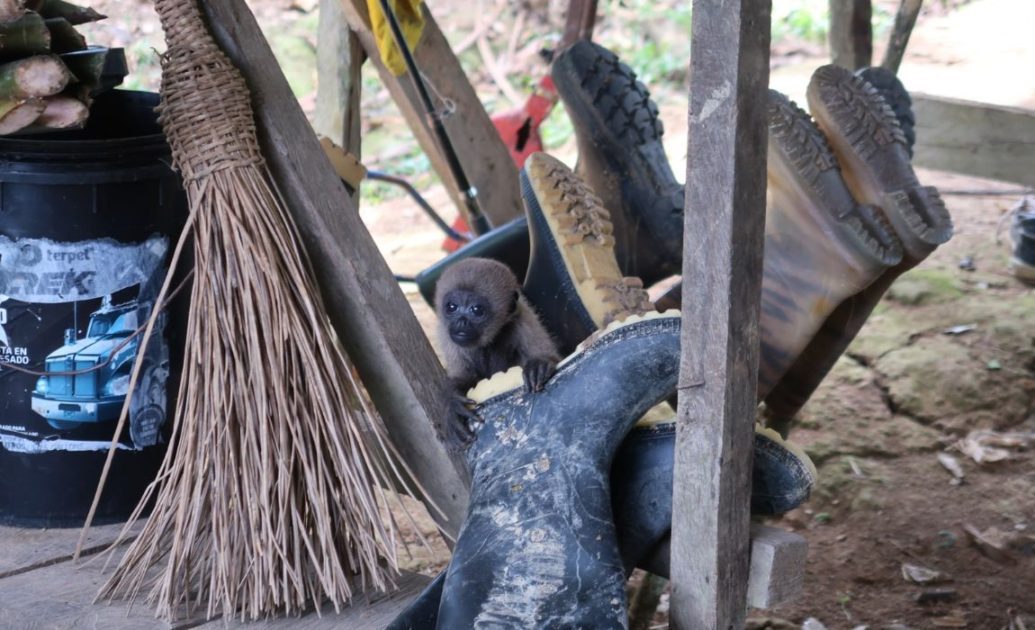
After a less-than-stellar lunch, which included a strange-looking and tasting fish soup, we stopped at a beach on the Amazon to enjoy the water. For me, just putting my feet into the water was enough, as you never know what might be lurking beneath the surface.
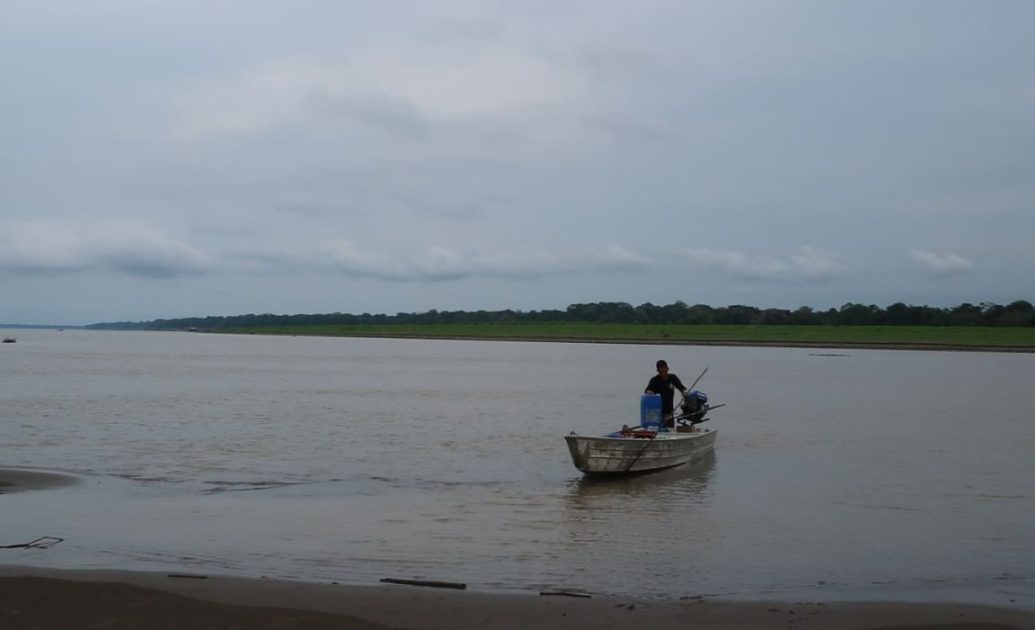
As we were slowly riding back up the river, we were unexpectedly attacked by a fish swarm. About 10 fish jumped into our boat, hitting some of us in the face. It was a mix of being scared and amused at the same time, but we, of course, put them all back into the water. We also had the opportunity to see some grey and pink dolphins close to our boat.
Back at the Ecolodge, we had some time to ourselves to unwind, relax, or simply do nothing. At 7 pm, we had dinner, which typically consisted of rice, salad, plantain, and either chicken or fish. It’s recommended to bring a book when you visit the Amazon for downtime like this.
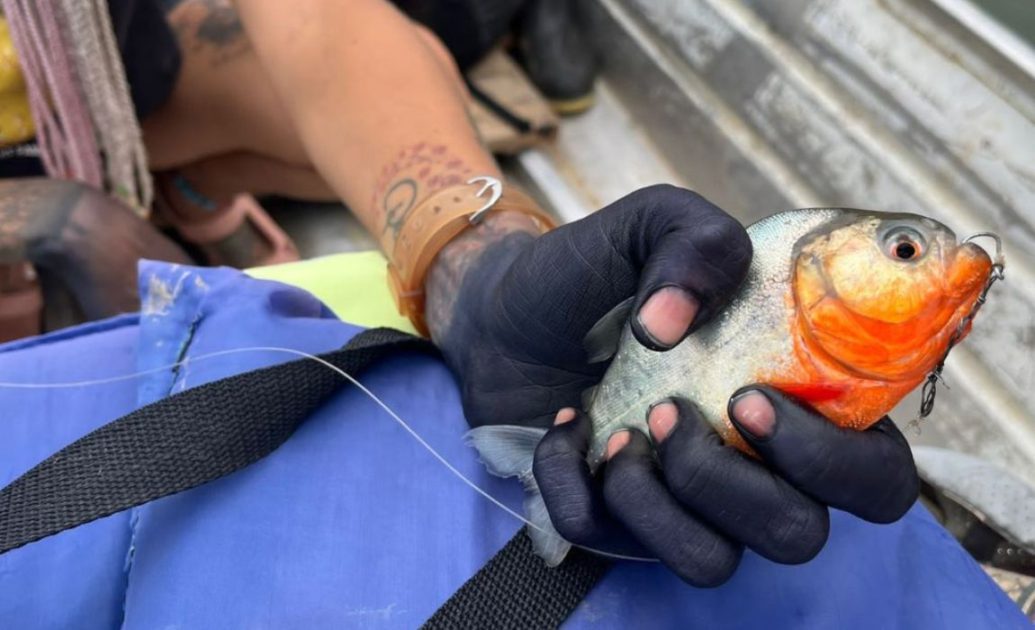
Wrapping up
I’ve never been disconnected from modern life for such an extended period. In our daily lives, when do we ever truly sit and do nothing, let alone think of nothing? It’s difficult for me as there are so many distractions, especially with a phone always within reach.
But in the Amazon rainforest, nothing else mattered, only the present moment. It was an incredible feeling. I’ll publish an article soon about my remaining days in the Amazon.
If you’re in Colombia or planning a trip there, make sure to visit San Jose del Guaviare. It’s another off-the-grid experience, but on a completely different level. Check out the Lost City Trek if you’re looking for a physical challenge.
This article may contain affiliate links. I receive a small commission when you purchase products or services through these links at absolutely no extra cost to you. This is a free way to support me and allow me to continue to create inspiring adventure travel guides. See my disclosure notice for more information.
